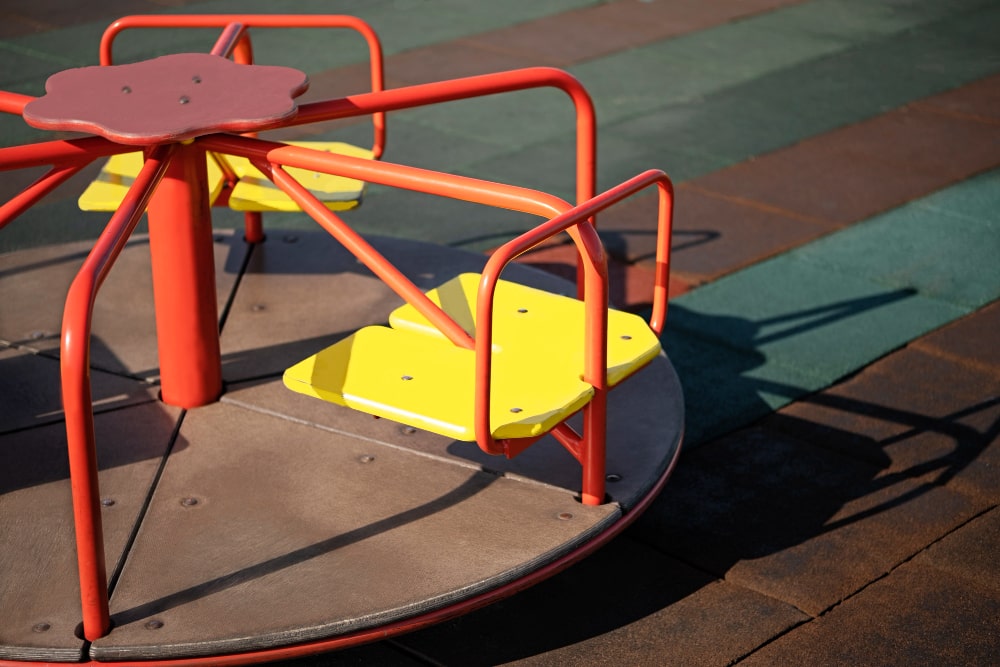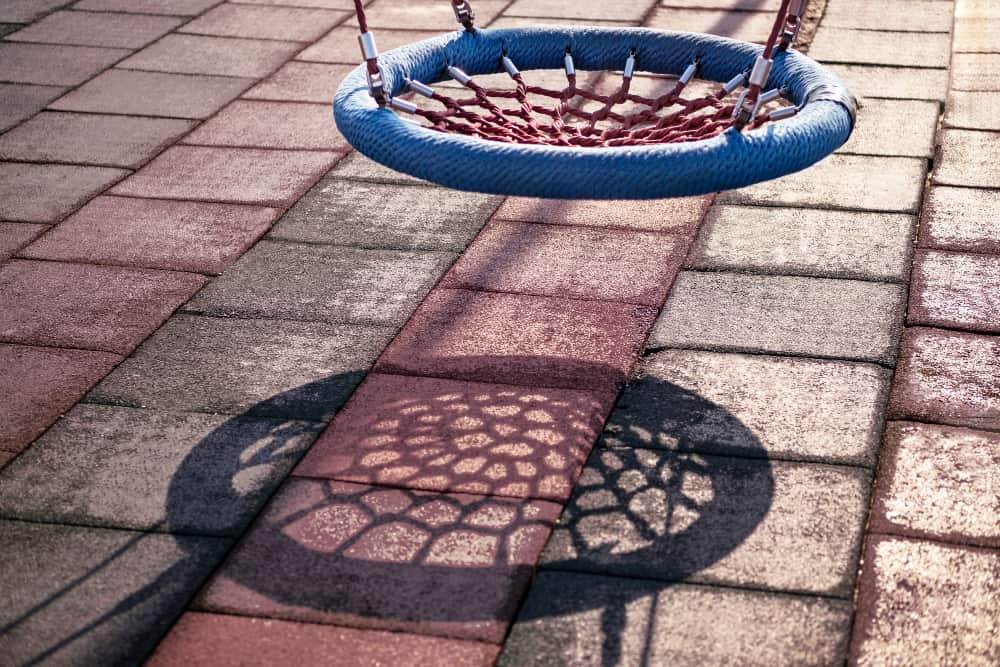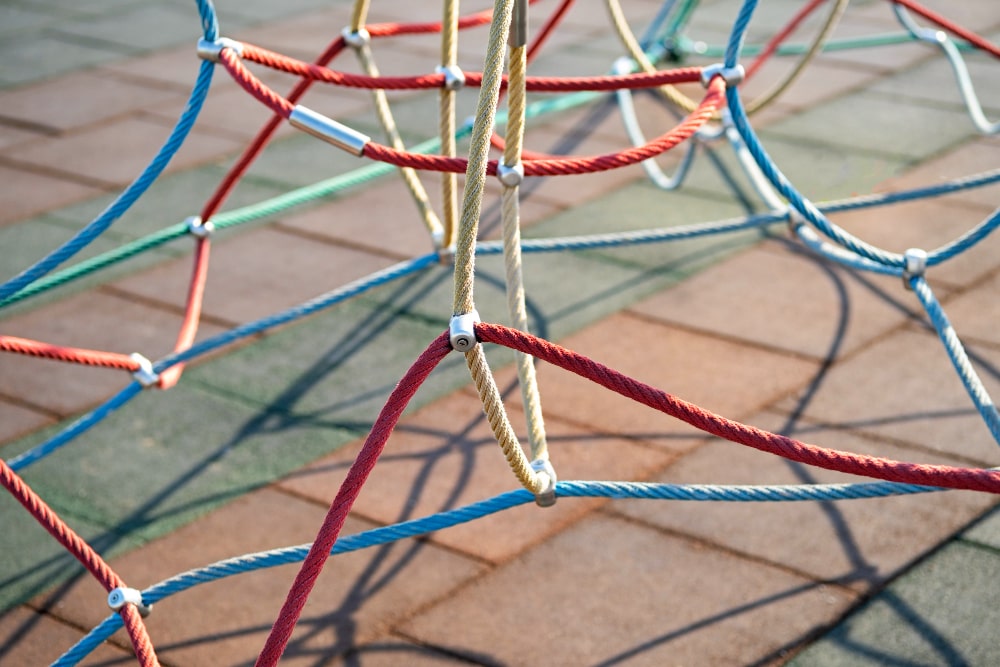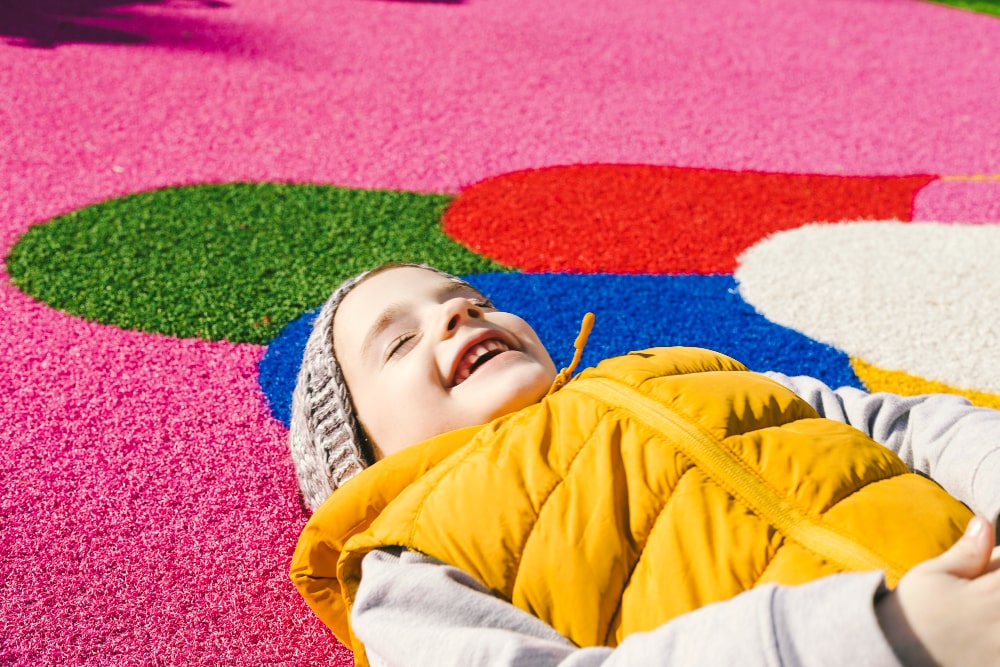How Much Does A Poured Playground Surface Cost
DECEMBER 15, 2023
Table of content
- What Is An Average Poured Rubber Playground Cost?
- Playground Surfacing Cost Comparison
- Poured-in-place rubber playground cost
- Rubber playground tiles cost
- Playground mulch cost
- Artificial turf (or grass) playground cost
- Concrete playground
- Rubber pavers
- Asphalt playground
- Engineered wood fiber (EWF)
- Playground Surfacing Costs — Main Factors To Consider
- Depth or thickness
- Recycled materials
- Color
- Cost Of Maintenance
- Where Poured Rubber Surfacing Can Be Used Else?
- Do It Yourself (DIY) Or Hire A Professional Installer?
- Final Words
There are numerous issues to be considered when planning and constructing a playground: the appropriate location of playground equipment and searching for suitable floor covering materials that meet safety standards without breaking the budget. No wonder that poured rubber surfaces for playgrounds outshine all the other options, given their durability, slip-resistance, versatility, and fall cushioning.
However, you need to ensure you don’t drain your pocket when installing the playground surface. So, what is the cost of a poured playground surface versus others? This article will discuss all aspects of these surfaces and attempt to find the perfectly balanced option. We will also look at some crucial aspects you should consider when estimating the final budget for your playground surfacing.
What Is An Average Poured Rubber Playground Cost?
When calculating the potential playground surface cost, pay attention to playground size. For a playground area exceeding 1000 square feet, expect to pay between $7 and $15 per square foot. Here, you can see a ballpark figure of the budget you should plan for a 1,000-square-foot playground:
| Average cost | Highest Cost | Lowest Cost |
| $11,000 | $15,000 | $7,000 |
However, if you are going for a smaller playground, note that it will be more expensive. The price may range from $16 to $25 per square foot ft plus labor.

Playground Surfacing Cost Comparison
One significant thing to remember when designing and planning to construct a playground is the budget. Nevertheless, remember that just because the product has a lower initial cost does not make it cheaper. Most of these affordable products may require extra maintenance, installing new pieces as the old ones wear out. These factors boost the costs in the future much more than buying quality products immediately.
| Playground surfacing type | Cost to install (per square foot) |
| Poured-in-place rubber | $7-25 |
| Rubber tiles | $6-20 |
| Rubber mulch | $0.80-1.20 |
| Artificial turf | $5-20 |
| Concrete | $4-30 |
| Rubber pavers | $2-6 |
| Asphalt | $7-13 |
| Engineered wood fiber< (EWF) | $1.50-3.50 |
Poured-in-place rubber playground cost
Rubber poured-in-place surfacing is one of the most trustworthy alternatives in spacious environments with intensive traffic flow. Depending on the playground size, poured-in-place rubber ranges between $7 – 15 (for larger spaces) and $16 – 25 per square foot for smaller playgrounds. It should be noted that the cost of playground surfacing made of poured-in-place rubber also depends on the square footage and the rubber thickness. Nevertheless, remember that however cost-prohibitive poured-in-place rubber surface may seem, it is worthwhile in the long run, requiring little to no upkeep or other hidden hosts over time, unlike other materials. In addition to that, based on the research “Comparative performance of playground surfacing materials including conditions of extreme non-compliance” conducted at Monash University, rubber covering has been shown to be the safest one in terms of shock-resistance and fall protection.
Rubber playground tiles cost
Another excellent material for playground flooring is rubber playground tiles. They are long-tasking, anti-slipping, and easy to install, making them the top choice for hundreds of playgrounds for many years. The cost of rubber tile surfacing is also related to its thickness, quantity per field, and quality but typically ranges from $6 to $20 per square foot. Nevertheless, remember that tiling might be cheaper than poured-in-place rubber surfacing, yet more costly in the long run due to replacing damaged rubber tiles regularly.
Playground mulch cost
If cost-saving is what you want with less compromise on the quality of the playground, then rubber mulch is an appropriate surface option for your playground. The installed cost for a sheet of mulch starts from $0.80 to $1.20 per square foot. However, remember that rubber mulch needs periodic replacement of the lost filling, which is more costly in the long run.
Artificial turf (or grass) playground cost
Artificial turf (a.k.a artificial grass) is a great aesthetic option with good cushioning, usually selected as a great alternative to natural grass. The quality or type of turf you choose determines the installation cost, which can vary from $5 to $20 per square foot.
However, it is necessary to note that when installing turf, the condition of an existing surface can also affect the final price. Although artificial turf is a relatively costly option, unlike other loose-fill materials, it doesn’t require frequent maintenance and refilling, letting you save money in the long term.
Concrete playground
Easy to maintain and highly durable, concrete is a go-to choice for countless surfaces, not just playgrounds. Its prices range from 4$ to 30$, depending upon its design and slab thickness, though it does not take too much maintenance or buying a lot of additional materials in the long run, unlike loose-fill materials. However, the issue is that concrete is one of the least safe playground surfacing options, which can lead to severe injuries after a fall.
Rubber pavers
Rubber is a budget-friendly and customizable option, making it a brilliant replacement for other materials. Rubber pavers have the lowest average costs, ranging from $2 to $6 per square foot.
Asphalt playground
Asphalt may be the right playground surface if your top priority is durability. Asphalt is strong enough to survive the most demanding conditions – it does not fall apart or fade. Asphalt playground surfacing costs approximately $7-$13 per square foot to be installed, making it a relatively affordable option. However, it should be stated that asphalt can get extremely hot in direct sunlight, making it uncomfortable or even dangerous to walk on.
Engineered wood fiber (EWF)
Engineered wood fiber (EWF) is the most eco-friendly and cushioning material you can get. Secondly, EWF is also affordable within the price range of $1.5 to $3.5 per square foot. However, like any other loose-fill surfacing, EWF is easily displaceable – particularly in high-traffic areas – eventually increasing refilling and maintenance costs.

Playground Surfacing Costs — Main Factors To Consider
Consider depth, composition (recyclable component), and color in your total cost for the playground surfaces. In the example of poured-in-place rubber playground surfacing, we will describe how these factors can affect your final price.
Depth or thickness
The deeper your poured-in-place rubber is, the more raw material required, resulting in a higher price. The PIP flooring is usually made up of a surface (at least 9″ thick) and an underlayer (of 1-10″ thickness). Fall height requirements of surfacing directly correlate with its thickness, so having enough depth provides excellent shock absorption and reduces the probability of a serious injury by falling even from such height as 10 feet.
Recycled materials
To have some recycled material on your poured-in-place rubber flooring, be prepared for a high price. The price increase is very depending on how much of the recycled rubber is included.
Color
Choosing the color of a rubber for your playground is a double-edged sword. On the one hand, all-black rubber attracts and accumulates too much heat under direct sunlight. On the other hand, colored rubber can be up to four times more expensive than black rubber.

Cost Of Maintenance
When selecting the material for a playground surface, many people need to consider the initial installation cost. At the same time, long-term maintenance is also a massive factor in the affordability of the material.
In contrast, poured-in-place rubber requires nothing more than a rare cleaning to remove dirt or debris. Moreover, you are highly unlikely to need to replace your PIP surface sooner than 10-12 years after the initial installation or that the surface will get compacted over time.

Where Poured Rubber Surfacing Can Be Used Else?
The poured-in-place rubber surfacing is well known for its versatility, granted by its convenience, less maintenance, and safety. Besides playground flooring, rubber is ideal for a pool deck as a patio due to its slip-resistance, durability, and easy cleaning. The poured rubber surface is also perfect for durable, long-lasting driveways and can withstand heavy traffic. Due to all the earlier-mentioned properties, PIP can also be used for sidewalks.

Do It Yourself (DIY) Or Hire A Professional Installer?
It is strictly recommended not to take shortcuts regarding safety, so the installation should be done professionally, although it may be way more expensive. We recommend investing in professional installation of the surfacing to ensure it has the highest possible quality.
For your sense of ease about safety, hiring a professional installer to ensure installation is done correctly makes much sense. Also, skilled professionals have adequate tools and skills to complete tasks quickly.
Final Words
Ensuring that the play area for children is safe must always be the top priority while picking the surfacing for it. Nonetheless, it is equally crucial to choose a cost-effective one. The best surface material is poured-in-place rubber, as it offers superior fall protection, passes almost any drop test, is adaptable, requires little maintenance, and could help you cut expenses in the future.
